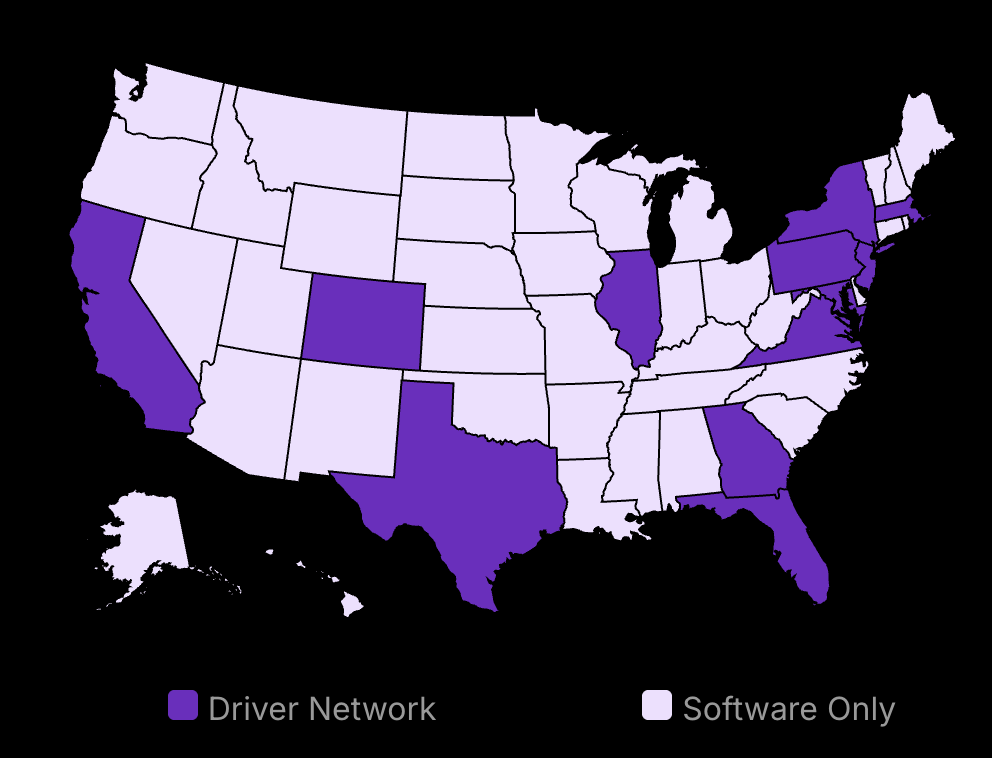In 2024, credit card fraud isn’t just a threat; it’s an all-out assault on your business’s future. Every swipe, every tap, every online transaction is a potential battlefield, and credit card theft and account takeover incidents are on the rise. The stakes? They’re higher than you might think.
Picture this: You wake up one morning to find your company’s bank account drained. Thousands of dollars in fraudulent charges, your credit reports impacted, your reputation in tatters, and customers fleeing in droves. It’s not a nightmare – it’s a reality for countless businesses who thought, “It can’t happen to me.”
But here’s the kicker: You’re not helpless. Far from it. You’re about to become the hero in this high-stakes drama, arming yourself with the tools to report credit card fraud and stop it in its tracks.
This isn’t just another “how-to” guide. It’s your battle plan for survival in the digital age, equipping you with strategies that will turn your business into an impenetrable fortress against credit card fraud and account takeovers.
From AI-powered detection systems to blockchain technology, we’re diving deep into the tools and tactics that will keep your hard-earned money where it belongs – in your pocket. Stay vigilant with credit reports from the three major credit bureaus, and keep close contact with your credit card issuer to stay informed of any threats.
But technology is only half the battle. The real secret weapon? It’s you. Your awareness. Your vigilance. Your commitment to protecting what you’ve built.
So, are you ready to join the fight? To transform from a potential victim into an unbeatable adversary? Because in the next few minutes, you’re going to learn how to not just survive in this new world of digital commerce but to thrive.
The fraudsters are out there, plotting their next move. The question is: Will you be ready when they strike?
Most Common Identity Theft
Credit card fraud constituted 40% of all identity theft reports in 2023, making it the most reported type of identity theft.

27% higher customer satisfaction
Professional delivery features:
- Real-time GPS tracking
- Automated ETA updates
- Delivery confirmation photos
- 27% higher delivery satisfaction
Top Credit Card Fraud Prevention Strategies for Businesses
TL;DR:
Implement strong authentication methods.
Conduct regular security audits.
Train employees to spot fraud trends.
Future Forecast
$43 billion is the projected total loss from global credit card fraud by 2026, reflecting a substantial increase from previous years.
1. Implement Strong Authentication Methods
Strong authentication acts as the first barrier against fraud. Businesses should use multi-factor authentication (MFA) for all transactions. MFA combines multiple checks like passwords, security tokens, or biometric scans. This makes unauthorized access more difficult. Another layer, especially for online transactions, is CVV verification via physical card. The CVV is the three-digit number on the back of a card. Requiring it in each transaction adds security because it’s not stored electronically.
Action Items:
-
Enable MFA for transactions on all business platforms.
-
Require CVV verification for every online purchase.
A real-world example involves Chase Bank’s approach. They require MFA for online account access, which has reduced incidents of unauthorized logins significantly.
Myth to Debunk: Many believe that passwords alone are enough to secure accounts. In reality, they are often the weakest link in security protocols.
Dive Deeper:
-
Book: “Understanding and Managing Security Risks” by Michael E. Whitman
-
Podcast: CyberWire Daily
-
Course: MIT’s Cybersecurity for Managers
2. Conduct Regular Security Audits
Security audits are about prevention. Businesses need to schedule periodic reviews of payment systems. These audits identify and address vulnerabilities before they are exploited. Engaging third-party experts can be beneficial. They bring fresh perspectives and expertise in identifying weak spots that in-house teams might overlook.
Action Items:
-
Set up a schedule for bi-annual security audits.
-
Hire cybersecurity experts to perform assessments.
In 2023, a large retail company discovered a major vulnerability during an external audit. The timely fix prevented potential losses from millions in fraud.
Argument: Some argue audits are expensive and time-consuming. However, the cost of fraud could be much higher without them.
Dive Deeper:
-
Book: “Auditing IT Infrastructures for Compliance” by Martin Weiss and Michael G. Solomon
-
Course: Coursera’s Cybersecurity Specialization
-
Expert: Troy Hunt, cybersecurity expert
3. Employee Training and Awareness Programs
Employees are both a company’s strongest defense and its weakest link. Proper training helps them recognize signs of fraud. Businesses should offer regular training sessions. These should cover how to identify suspicious activity and stay updated on new fraud trends. Engaging employees in proactive prevention creates an alert and informed workforce.
Action Items:
-
Schedule monthly fraud awareness training.
-
Update employees on new phishing tactics regularly.
A tech firm reduced fraud incidents by 70% by introducing quarterly training programs. This included simulations of potential fraud scenarios which enhanced employees’ alertness.
Myth to Debunk: A common misconception is that fraud prevention is solely an IT department’s responsibility. In truth, it involves everyone, from front-line staff to executives.
Training Mitigates Fraud Impact
According to ACFE, organizations that implement anti-fraud training programs experience a 47% to 50% reduction in the financial impact of fraud, along with a 37% to 40% decrease in the duration of fraud incidents
Dive Deeper:
Book: “Fraud 101: Techniques and Strategies for Detection” by Stephen Pedneault
Podcast: Security Now by TWiT
Course: LinkedIn Learning’s “Cybersecurity Awareness: Building Your Security Skills”
This section has highlighted practical and immediate steps for enhancing a business’s defense against credit card fraud. Each strategy not only mitigates current risks but also sets the foundation for more robust security practices in the long term.
Merchant Security Best Practices You Should Follow
Protect your payment systems with SSL and keep the software updated.
Set transaction alerts to catch suspicious activity quickly.
Control who can see and use sensitive data in your business.
1. Secure Your Payment Environment
SSL Certificates for Data Encryption
SSL certificates are essential for encrypting data during transmission. Without them, customer information is vulnerable to interception by malicious parties. Implementing SSL certificates can also boost customer trust, as it displays a commitment to protecting sensitive data. The importance of TLS encryption in securing communications was highlighted in recent studies.
Update POS Systems Regularly
Keeping your point-of-sale (POS) systems updated is crucial. Outdated systems can become easy targets for cybercriminals, who exploit vulnerabilities to access sensitive credit card information. A significant cause of payment data breaches is the failure to apply patches to software promptly. Software patches are essential as they often include fixes for security flaws that might otherwise be exploited.
2. Set Up Alerts for Unusual Transactions
Transaction Thresholds
Set automated alerts for transactions in financial accounts that exceed a specific amount. This approach helps quickly identify large, potentially unauthorized purchases. Customize these alerts to suit typical business patterns, thus reducing the risk of false positives. By doing so, businesses can promptly react to unusual transactions, safeguarding their finances from significant losses.
Low-Value Fraud on the Rise
55% of fraudulent transactions involve amounts less than $100, indicating that small transactions are often targeted.
Flagging Suspicious Locations
Adjust alerts to monitor orders from locations known for high rates of fraud. This involves analyzing data to identify patterns indicative of fraudulent activity. Regularly review these settings to ensure they align with the latest geographic fraud risks. Successfully implementing these strategies helps in catching fraud early, and preventing unauthorized access to business funds.
3. Limit Access to Sensitive Information
Role-Based Access Control
Deploy role-based access control (RBAC) to restrict access to critical payment information. RBAC ensures employees only have access to the data needed for their roles, which minimizes the risk of internal fraud. Regular audits of these permissions protect against unauthorized financial information and sharing, a key threat in any business environment.
Updating Employee Permissions
Consistently review and update employee access permissions. Changes in roles or responsibilities necessitate reassessments of access needs. Neglecting this can result in former employees or those with outdated permissions having unnecessary access to sensitive data. Regularly updating who can access what is a simple yet effective measure in risk management.
Deploying these best practices can significantly bolster your defense against credit card fraud. Protecting your EIN, or Employer Identification Number, from application fraud is also vital. Fraudsters can misuse an EIN, leading to unauthorized accounts or lines of credit in your business’s name. Part of fraud prevention is understanding how these elements are interconnected in your business processes.
Authenticating a business’s legitimacy can be achieved by verifying its registration and tax filings, among other checks. Conducting these due diligence steps can prevent financial and reputational damage. Businesses can place fraud alerts by contacting their credit agencies, a step that signals creditors to verify identity before extending credit or debit cards.
Cybersecurity is an ongoing process. Adjust and evolve your strategies as new threats emerge. Consider reading “Principles of Information Security” by Michael E. Whitman for a deeper dive into managing business risks. For those curious about protecting digital environments further, the podcast CyberWire Daily offers insights into current security trends.
As we discuss these strategies, remember they are parts of a larger ecosystem of fraud prevention practices.
The Role of Advanced Payment Security Technologies in Fraud Prevention
Technologies like tokenization, encryption, AI, and blockchain fortify payment systems.
These advancements help detect and prevent fraud, saving businesses from potential losses.
Leveraging these tools creates a safer environment for transactions.
Rising Credit Card Fraud
In the first half of 2024 alone, there were 111,000 cases of credit card fraud reported, indicating ongoing high levels of this crime.
Tokenization and Encryption
Tokenization: Reducing Risk Through Substitution
Tokenization is a leading strategy where sensitive cardholder data is replaced with unique, non-sensitive identifiers known as tokens. This process minimizes the risk of a breach because the stored tokens are of no use outside the specific transaction context. For example, if cybercriminals intercepted this data, they wouldn’t find any meaningful cardholder information they could exploit. Most payment processors offer tokenization services as part of their security packages. Considerations for businesses include selecting a provider with robust security measures and reliable customer support to maximize these protections.
Encryption: Securing Data In Transit and At Rest
Encryption adds another layer by converting data into code during transmission and storage, rendering it unreadable without the proper decryption key. Effective encryption focuses on secure communication channels, such as SSL or TLS protocols, that protect cardholder data as it moves between customer, merchant, and bank. Businesses implementing encryption should regularly update their cryptographic algorithms to guard against evolving threats. A resource worth exploring is Bruce Schneier’s “Applied Cryptography” for a deeper understanding of cryptographic systems.
Machine Learning and AI Detection
AI and Detection Accuracy
Implementing AI tools significantly enhances a credit card company itself’s ability to detect and address credit card fraud. AI systems analyze spending patterns and flag deviations from usual behavior, thus identifying potential fraud quickly. For instance, a sudden spike in expensive purchases or transactions from disparate locations might trigger alerts. Fraud detection solutions incorporating AI are continually learning, adapting to new fraud techniques, and refining their predictive capabilities.
“AI is proving to be very effective in battling fraud,” as revealed by a Forbes article, underscoring the confidence many financial institutions place in AI-driven tools. A PYMNTS study notes that 80% of fraud specialists using AI find the technology valuable in reducing payment fraud—an indication of its broad application potential.
Machine Learning: Continuous Improvement
Machine learning improves fraud detection by learning from patterns and outcomes in recorded transactions. It moves beyond simple rule-based systems by adjusting algorithms dynamically, catching fraudsters who try to outwit static defenses. To gain a broader perspective on machine learning applications in fintech, the book “Deep Learning” by Ian Goodfellow is an insightful read.
Blockchain for Secure Transactions
Blockchain: A New Frontier in Transaction Security
Blockchain technology presents a transparent and immutable ledger, making it difficult to alter transaction records. By implementing blockchain, companies can secure payment processes and ensure authenticity. This technology is particularly beneficial for businesses dealing with high-value or cross-border transactions. Although blockchain comes with cost and integration challenges, its potential to make systems more consistent and less vulnerable makes it a noteworthy consideration.
Evaluating Blockchain Integration
Assessing blockchain’s fit for a business involves examining both benefits and drawbacks. On the plus side, its decentralized nature reduces the risk of a single point of failure. However, integration can be complex and resource-intensive. Delve into “Blockchain Basics: A Non-Technical Introduction in 25 Steps” by Daniel Drescher to understand if blockchain aligns with your company’s goals.
Adopting these advanced technologies creates more secure financial interactions and equips businesses to counter and defend against credit card fraud effectively.
Recognizing Signs of Possible Credit Card Fraud
Sudden invoice changes could signal fraud.
Unfamiliar charges might be unauthorized.
Customer complaints need quick investigation.
High Rates of Business Fraud in the US
Reports indicate that nearly 96% of U.S. companies faced at least one fraud attempt in the last year, with many experiencing successful attacks.
Spotting signs of credit card fraud early can save businesses time and money. Experts stress vigilance and quick action to mitigate risks. Understanding these indicators is essential for preventing losses.
1. Unexpected Invoice Requests
Unexpected invoice requests are one of the first signs of potential fraud. If a vendor unexpectedly changes their bank details or asks for payment through a different method, it could be a red flag. Often, scammers infiltrate email chains, posing as vendors to redirect payments to new accounts.
Businesses can protect themselves by setting up strict protocols. Always verify changes in payment details directly with a known contact from the vendor. Avoid relying solely on email for confirmations. Using alternative communication channels like phone calls reduces risks.
A company in the retail industry lost $50,000 after an unsuspecting employee paid a fraudulent invoice. This happened because the company didn’t have a verification process. They later implemented a dual-approval system for payment changes, which has effectively curbed such occurrences.
Action Items:
Verify payment changes via phone calls or in-person meetings.
Implement dual-approval systems for payment alterations.
Dive Deeper:
Book: “The Dark Side of the Internet: Fraud Risks and How to Avoid Them” by John Smith
Podcast: The Fraudcast
Course: Fraud Detection and Prevention Strategies, offered on Udemy
2. Unfamiliar Charges and Refund Requests
Close monitoring of transactions on credit accounts can reveal unauthorized activities. Unfamiliar charges, especially those from new locations or in unusual patterns, might indicate fraud. High-value refund requests also merit scrutiny. Fraudsters exploit refund systems as a way to steal without detection.
To combat this, companies should examine their transaction records meticulously. Look for any unexplained charges or multiple refunds from the same source. Fraud detection software can automate this process, identifying potential problems based on patterns in account information.
Consider the example of an online platform that noticed multiple refund requests from a single account. They investigated and discovered the user exploited a loophole in their refund policy. Prompt action and policy updates saved them over $10,000.
Action Items:
Use fraud detection software to monitor transaction anomalies.
Set policies to limit high-frequency refund requests.
Dive Deeper:
Book: “The Art of Intrusion” by Kevin D. Mitnick
Podcast: Cyber Crime Time
Course: “Fraud Prevention in E-commerce” on LinkedIn Learning
3. Customer Complaints About Unauthorized Charges
When customers report unauthorized charges, it requires immediate action. These complaints might stem from simple errors, but they could also signal fraud. Ignoring or delaying the investigation can damage trust and potentially lead to significant financial loss.
A swift response involves both acknowledging the customer’s problem and collaborating with your payment processor. They offer resources to trace and potentially reverse fraudulent charges. Speedy resolution not only restores customer faith but also may prevent further fraud.
Consider a restaurant chain that faced multiple customer complaints about unexplained charges. They collaborated with their bank and found their POS system had been compromised. Closing the breach and updating systems fortified their defenses, preventing future incidents.
Action Items:
Establish a process for quick investigation of complaints.
Work with payment processors to resolve disputes effectively.
Dive Deeper:
Book: “Risk Management: Applications and Techniques” by Cara Roth
Podcast: The CyberWire
Expert: Brian Krebs, investigative journalist on cybercrime
Recognizing signs of credit card fraud is a crucial part of a comprehensive fraud protection strategy. It’s necessary for businesses with credit card accounts to remain aware and prepared to protect both their assets and customer trust.
Understanding Merchant Liability for Credit Card Fraud
Merchants can face liability for fraud, especially with card-not-present transactions.
Compliance with PCI DSS reduces penalties and fraud risk.
Working with banks helps identify fraud early and manage it effectively.
Fraud Attacks on E-commerce Merchants
The number of credit card fraud attacks on e-commerce merchants rose by 140% between 2019 and 2022, highlighting the vulnerability of online sales platforms.
1. Know the Chargeback Process
Merchants should know the chargeback process inside and out to prepare for disputes. Chargebacks occur when a cardholder disputes a transaction, and the merchant gets a reverse charge. Merchants should therefore keep robust transaction records. These records help challenge any fraudulent chargebacks successfully. It’s a two-step dance: understanding what triggers chargebacks and having defenses ready. Discover how to navigate the complexities of chargebacks and implement strategies to minimize their impact on your business’s bottom line.
While it might seem straightforward, chargebacks can become complex, expensive, and labor-intensive. Statistics show merchants lose $3.75 for every dollar in chargebacks when accounting for fees and administration costs. This is why understanding the dispute process and having a streamlined response system is crucial. For further reading, the book “Chargeback Management for Merchants” by Scott M. Stone is an excellent resource.
Gary Rutledge, a former Mastercard Security Committee member, states: “If the EMV chip is read at the purchase point and everything is done right, liability shifts from credit card companies to the merchant to the card issuer.” So, ensuring chip-reading protocols work properly is a must.
2. Responsibilities Under PCI Compliance
Compliance with PCI DSS (Payment Card Industry Data Security Standards) is non-negotiable for lowering merchant liability. These standards are designed to protect credit card holders’ data and reduce breaches. Merchants who adhere to these standards not only minimize penalties but also build a robust defense against fraud.
Being PCI compliant involves rigorous controls. These controls cover everything from data encryption to network security measures. Non-compliance can lead to severe financial penalties, which are ultimately passed down from banks to merchants, as mentioned by Chi Wu. The more a business scales, the bigger the responsibility to remain updated and compliant grows. For deeper insights into PCI compliance, “PCI Compliance” by Branden R. Williams is recommended.
3. Collaborate with Banks and Payment Processors
Cooperation with banks and payment processors is vital. These entities hold extensive fraud management resources, which merchants can leverage. Banks monitor transactions for unusual activities and alert merchants about potential fraud. Establishing a collaborative relationship with them early is strategic.
Banks may help identify patterns that indicate credit card fraud. They might provide tools and alerts tailored to a merchant’s specific business needs. Keeping an open line of communication with banks ensures that merchants are well-equipped to tackle credit report fraud swiftly. For strategic collaboration, “Managing the New Bank Relationship” by David G. Cooper provides insights into fostering productive partnerships with financial institutions.
4. Liability in Card-Not-Present Transactions
Card-not-present (CNP) fraud is a significant issue for e-commerce merchants. In many cases, merchants bear the liability for CNP fraud. This fraud type occurs during online transactions where the card isn’t physically verified.
CNP Fraud
Card-not-present (CNP) fraud accounted for 73% of payment card fraud losses, reflecting the growing risk associated with online transactions
To minimize liability, merchants should implement advanced security measures. These include using two-factor authentication, transaction monitoring, and setting strict refund policies. These strategies sharply reduce the risk of fraudulent activities slipping through the cracks. An insightful read on tackling CNP fraud is the “E-commerce Fraud Risk Management” guide by the Federal Trade Commission, available on their website.
Real-Time Fraud Detection
38% of cardholders with alerts enabled were notified within minutes of an attempted fraudulent transaction, emphasizing the effectiveness of real-time monitoring.
5. Liability Limits and Consumer Protections
While merchants face substantial liability, consumers also have protections. For unauthorized charges on debit cards, consumers’ liability is capped at $50 under the Fair Credit Billing Act, though credit card networks typically cover this liability. For consumers, this fosters trust in using credit cards. For merchants, the focus remains on reducing the incidence of fraud that leads to chargebacks.
The expertise in managing credit card fraud involves balancing consumer protection, seamless transaction experiences, and risk management. Merchants often need to educate customers about secure credit card statements and transaction practices, actively closing the loop on the fraud cycle.
By delving into these aspects, merchants gain insight into managing their risk landscape better. The multifaceted approach, from knowing chargeback processes to leveraging PCI compliance, equips businesses with the knowledge to mitigate fraud impacts. Reading “Cybersecurity for Dummies” offers a comprehensive look at maintaining business security without overwhelming the reader with technical jargon.
Fortify Your Business Against Credit Card Fraud
Credit card fraud, account takeover, and credit card theft aren’t going away, but neither is your ability to fight back. By implementing strong authentication, conducting regular audits, and training your staff, you’re building a fortress around your business to protect against credit card fraud. Embrace advanced technologies like AI and blockchain to stay ahead of fraudsters targeting your credit card issuer and prevent fraudulent purchases. Remember, vigilance is your best defense. Keep an eye out for unusual or suspicious transactions, respond quickly to account takeovers, and take customer complaints seriously by directing them to report credit card fraud immediately.
Understanding your liability and maintaining PCI compliance isn’t just about avoiding penalties—it’s about protecting your business’s reputation and financial health. Regularly review and update your practices to adapt to new threats, including potential account takeovers and suspicious activity that may impact credit reports. Make security a core part of your strategy, and stay informed about updates from the three major credit bureaus to safeguard your business.
The battle against credit card fraud occurs every day, but you’re now equipped with the knowledge to protect your business effectively. Stay alert and collaborate with banks, credit card issuers, and security experts. Your proactive approach today will safeguard your business’s future in the ever-evolving landscape of digital payments.


























